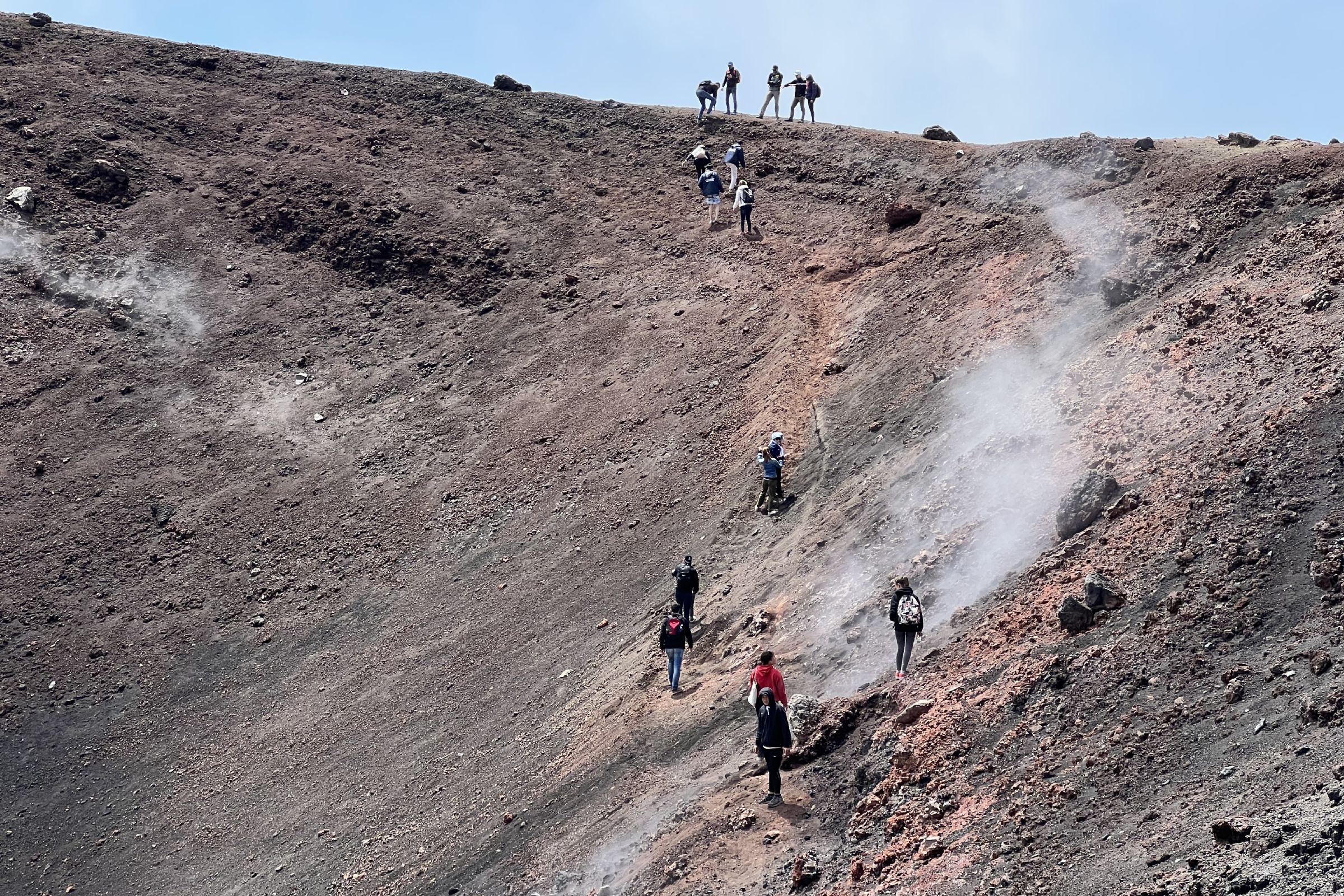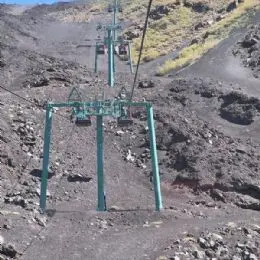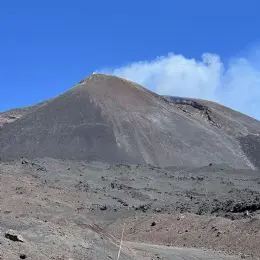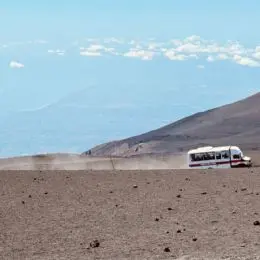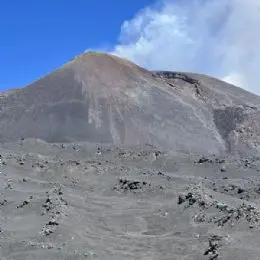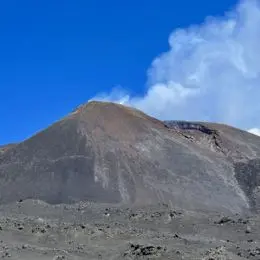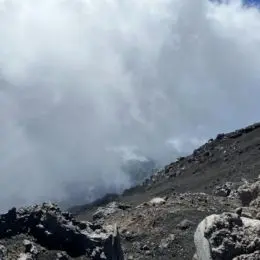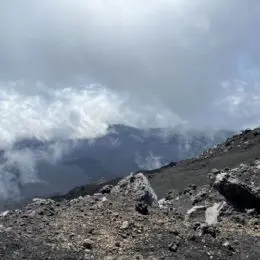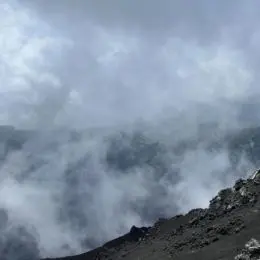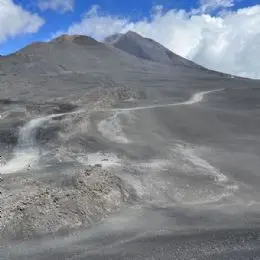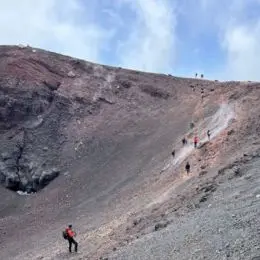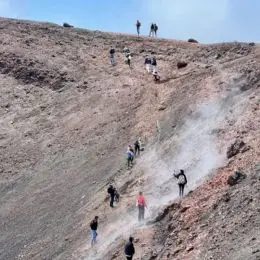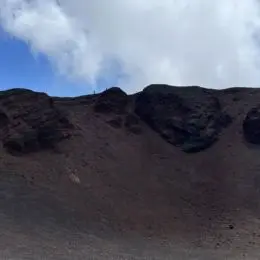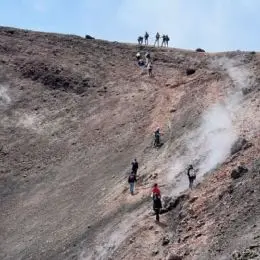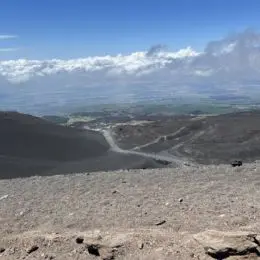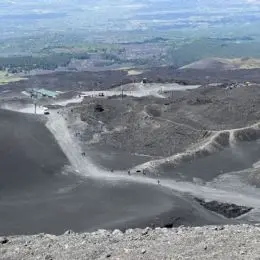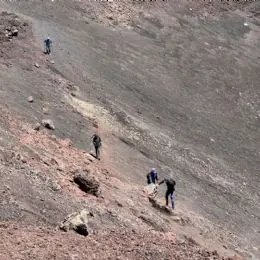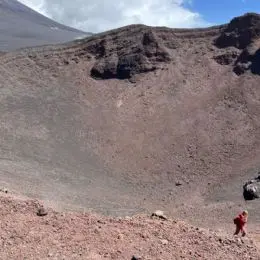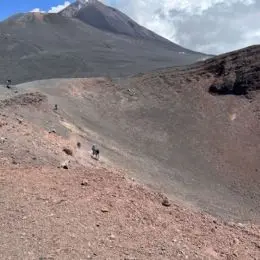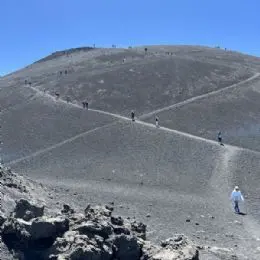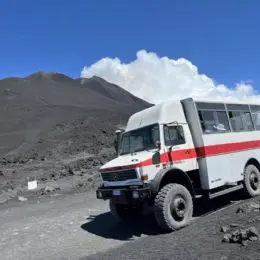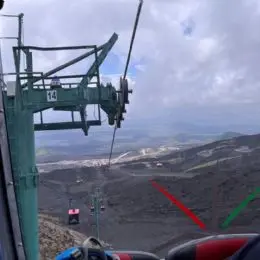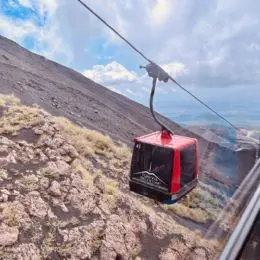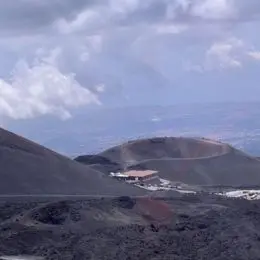The volcano Etna
Etna is one of the most famous and largest volcanoes in the world and dominates almost the entire landscape of eastern Sicily with its smoking peak that almost constantly accompanies those who travel to this region. Despite the risk of eruptions, the volcano remains one of the major tourist attractions on the island.
The main crater is still dangerously active and is becoming increasingly explosive, as evidenced by the spectacular eruptions of 2001 and 2002, which eclipsed those of the previous decade.
In February 2021 a new phenomenon was characterized by a lava fountain, an emission of eruptive ash, a fallout on the east side of Etna, roars heard from a great distance and a lava flow that expanded along the western side of the Valle del Bove.
Etna looks like an interrupted cone at 2900 m from a plane from which the terminal cone rises. The slopes of the volcano are dotted with many secondary craters, such as that of the Valle del Bove , on the south-eastern side, the two craters created with the 1974 eruption on the west side; the eruption of 1669 instead led to the formation of the cones called Monti Rossi .
A ring of walls surrounds the lower slopes of Etna, including the ski centers of Linguaglossa and Nicolosi , where almost all the accommodations, restaurants and operators who organize excursions in the area are concentrated. The two main routes to the summit go up the north side and the south side.
The north side of the volcano boasts some of the most beautiful scenery. After Piano Provenzana, however, the road is carefully guarded. If, on the other hand, you want to climb along the southern slope past Nicolosi, the main starting point is the Rifugio Sapienza , a mountain hotel refuge.
Excursion to the top of Etna
The main attraction is the ascension to the upper band of Etna, which with its 3323 m, is a real imposing mountain with the difference that there is an active volcano here, which makes the experience even more exciting.
To climb to the top you have to cover 10 km of bumpy track , mostly covered with lava; the ascension, a high mountain excursion that is worth the effort and allows you to fully appreciate the power of Etna, can be facilitated by taking the cable car or using the jeep-minibus service .
In the upper wall the volcano resembles a lunar landscape, and the ground underfoot will be black, gray or red from time to time depending on the lava.
The newer material lies in huge folds, and as you climb the signs will point to the oldest minor craters; under the red roofs and green fields of the lower hills they stretch towards the sea. The altitude that can be reached depends on the volcanic activity and the weather conditions.
If you have little time or weather conditions prevent the climb to the craters you will have to be content with the panoramic views of Etna offered by the Circumetnea railway , a narrow gauge railway that from Catania reaches Riposto , after having circumnavigated the volcano, making one of the most fascinating island.
Legends
Etna was one of the places where the Greeks assumed that Vulcan had its forge , an adequate description of the large amount of lapilli and smoke emitted from the main crater. The philosopher Empedocles studied the volcano closely, living in an observatory near the top. Certainly this experience strongly marked Empedocles, who in 433 BC threw himself into the main crater in an attempt to prove that the gases emitted by the volcano would have suspended his body weight.
Flora
As for the vegetation, Etna is divided into three zones: up to 1300 m there is a cultivated area followed by a wooded area up to 2000 m and an arid area in the upper belt, where up to 2500 m species like juniper, crocus, soapwort and artemisia and endemic varieties such as the Etna violet and the holy thorn or Etna astragalus; very few species manage to live above 2500 m.
Fauna
The fauna includes small mammals such as foxes, hares, rabbits, weasels, martens, ferrets, hedgehogs and some rare wild cats.
Etna Park
